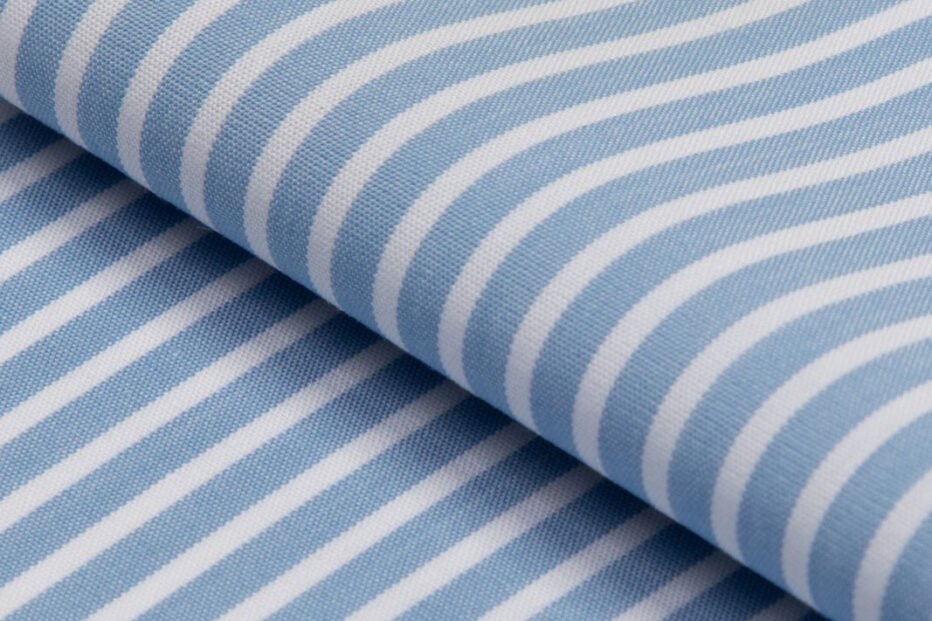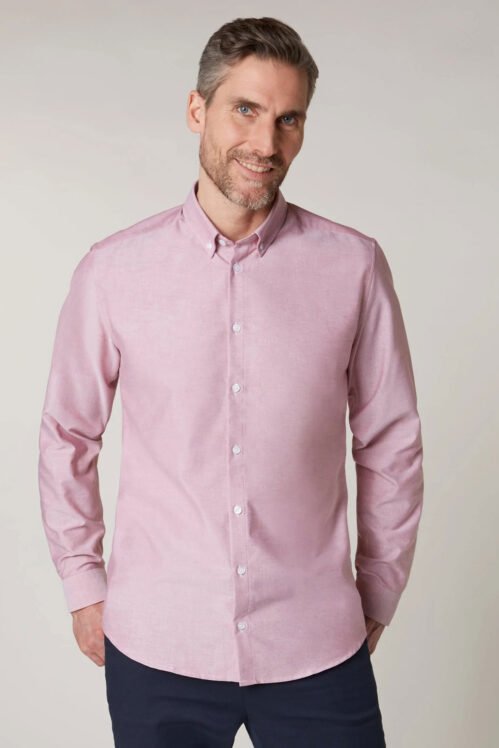The Oxford shirt has come a long way from its original roots- 19th century Scotland (not England like the name might suggest.) During this time, it was common for Scottish weaving mills to experiment with fabric structures- believe it or not, the competition was fierce in the textile world and mills had to constantly come up with new ideas.
Common Applications
Shirts, Sportswear, Bedding, Wall Hangings

Description
A casual textured shirt fabric popular among those attending prestigious universities
Oxford cloth is a type of woven dress shirt fabric , made using basket weave , employed to make dress shirts sometimes called Oxford shirts worn on casual to formal occasions .
Oxford fabric is very popular due to its characteristics and multipurpose use. Originally Oxford weave was made using primarily cotton, but nowadays many other fibres are used including Polyester, Viscose and other synthetic fibres.
Background
Story
During the early 19th century, the heart of European textile production was in Scotland. One mill (name unknown) was experimenting with new weaves. They marketed four new fabrics, which were named after the most popular universities of the day (Yale, Harvard, Cambridge & Oxford) .
Three of the weaves didn’t prove to be very popular and therefore they ceased production on those, but Oxford cloth still survives today.
Manufacturing
The Oxford fabric has great insulating properties. It can trap in a lot of air depending on its thickness and keeps one warm. Hence, it can be a great choice for winter. Oxford fabrics have fine textures and are slightly heavy in weight. Their basket type of weaving gives the fabric durable and breathable properties.
These fabrics age well and get softer with each use. They are also naturally resistant to wrinkles. Oxford fabrics dry easily after washing. They have good resistance to abrasion and chemical agents. Easy to maintain Oxford fabrics are often used with an additional coating. One such coating is polyurethane, which provides water and wind-resisting properties as well as prevents accumulation of dirt between fibers, while the other, i.e., polyvinyl chloride coating provides complete water resistance.

Expertises
Characteristic
- Great insulating properties. It could trap a lot of air depending on its thickness which keeps oxford-made clothing warm. Consequently, Oxford is a great choice for a brumous season.
- Have fine textures properties and tend to retain their shape
- Soft, Versatile, and Lustrous
- Larger weave; basket weaving provides durable and breathable properties.
- Coarse and slightly Heavy in weight.
- Age well and get softer with each use.
- Naturally resistant to wrinkles.
- Good resistance to abrasion and chemical agents.
- Washable and dry easily after washing.
- Machine-washable, easy to maintain
- No ironing is needed after going through the washing process.
- Comfortable to wear, sturdy, durable, and also long-lasting
Oxford’s Functionality
Aesthetics were the initial reason Oxford shirts took off. The simple, yet unique look Oxford fabric brought to clothing appealed to many, and the shirt initially began its life as a collared, button-down garment to pair with a suit and tie.
However, it soon became apparent that the Oxford shirt did much more than simply look nice. The fabric was much more comfortable than other stiff, starchy shirting textiles, and it was also very breathable.
Once people caught on to the Oxford’s functionality, those properties were immediately put to use. In the early 1900’s, polo players started wearing Oxford shirts, because at the time, the fabric was the best on the market for sportswear. It was also during this time that two distinct styles of the shirt emerged.
A Casual New Approach
lthough Oxford shirts faded out of fashion for polo players, it remained highly popular with people who watched the games- mainly wealthy Ivy League students. In the 1950’s, they began to approach styling the shirt in typical college student fashion: very casually.
The Oxford became the 1950’s version of college sweats. The shirt was worn untucked, with the sleeves rolled up, with shorts, etc. The look was the initial iteration of “sport casual.”
The 1960’s marked a period in which fashion began to move away from more formal attire- the Oxford was the perfect shirt for this transition. Casual yet still smart, the garment became a closet staple for men. Even President Kennedy wore them, further cementing the Oxford as a respectable sartorial decision.
Today’s Oxford
Other than popped collars of the early 2000’s, the Oxford has been considered more of a staple than a trend piece. However, today new takes on the shirt have become very trendy.
Balenciaga recently released a very feminine version that features a cinched waist, puffed sleeves, and a pussy bow collar. Collared shirts with knee-length hemlines are a popular menswear trend. Unique details such as ruffles or open sides can be seen in many stores. Despite this, it’s safe to say that the original Oxford will always be a classic.
Social
12k followers
30k likes
Youtube
22k subscribers
8k followers
Have a project in mind?
If you have a great idea, reach out to me. Whether it is a small or big project, I will listen first and get back to you with a plan.

